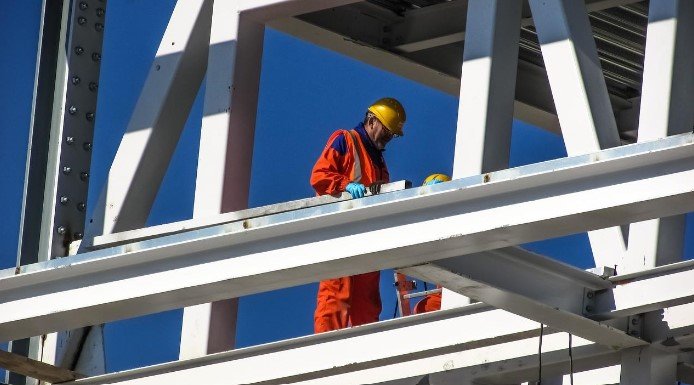Red tape everywhere when you just want to run your business. You’ve got to keep up with all the legalities and it can make your job more of a chore. Let’s say you clean windows. You just want to clean some windows and make your customers happy. The frustration is clear but we also understand that many policies are in place to keep employees safe. So you might ask when fall protection systems are necessary in the US.
Fall protection systems, as their name implies, are specifically engineered to safeguard workers against falls during tasks performed at elevated heights (winner!). These comprehensive systems encompass a range of equipment and protocols meticulously established to prioritize the safety and well-being of employees.
We’re talking about guardrails, safety nets, personal fall arrest systems, and positioning devices.
In the United States, fall protection systems are deemed necessary when an employee is working at a height of 6 feet or more. Nonetheless, there are specific exceptions to this regulation. For instance, if the nature of the work being performed does not entail any risk of falling, fall protection may not be obligatory.
Moreover, if the utilization of fall protection equipment would potentially elevate the hazard to the employee, then it might not be deemed essential.
Nobody wants to see workers get hurt (pointing out the obvious!) but the sad truth is that employers often aren’t careful enough and they don’t do enough. OSHA often releases stats and figures showing how problematic workplace injuries are and it’s time to take them seriously. By implementing appropriate fall protection measures, these figures can be significantly reduced, leading to a safer working environment for employees.
Nevertheless, it should be duly noted that fall protection systems extend beyond the confines of the construction industry.
The obvious truth is that these rules cover any job at height such as window cleaning, tree trimming, or even painting. They all necessitate the implementation of appropriate fall protection systems.
It’s not good enough to just address your fall protection plan once because it needs to be good enough every year, month, week, and day. This entails performing routine equipment inspections and providing comprehensive training to employees regarding the utilization of fall protection systems.
In the grand scheme of things, keeping up with legal requirements may seem like a hassle. But hey, it’s all about prioritizing the well-being of your awesome employees. Trust us, it’s worth it. Through the implementation and consistent upkeep of fall protection systems, employers can not only guarantee compliance with regulations but also establish a safer and more productive work environment for their workforce. Shine On Group is a great place to start (you’re welcome!).
Some other things that you can do to protect your workers and avoid fines and penalties include regularly conducting safety audits, providing proper personal protective equipment (PPE), and promoting a culture of safety within your workplace. Implementing these crucial yet minor measures can significantly contribute to accident and injury prevention in the workplace. Creating a safe work environment? It’s a team effort, folks. Employers, employees, and regulatory bodies, let’s join forces and rock the safety game together – let’s end unnecessary workplace injuries.
Keep your team safe and everyone will be happy!


